The use of donations can be categorized based on the intended effect that a donation has on the issue that it aims to help. Accordingly, the use of donations as either one-off or long-term. Long-term donations refer to support that is supposed to provide beneficiaries with strategic solutions to their problems, while one-off support has a short-term effect and addresses the symptoms of a problem but not the underlying cause.

Intended Donation Effect Trend 2018 - 2022 - download the infographic in PDF
Over the last eight years, an expansion and then a contraction of the relevant levels of strategic giving have been recorded, ranging from a high of 43.6% in 2019 to a low being recorded in 2022 of 15.5%. The level of strategic giving is not indicative of the quality of philanthropic giving but is more a reflection of the socio-economic conditions in the country and the availability of resources to address both short-term and long-term impacts at the same time.
Breakdown of Short-Term Effect Giving in 2022
Short-term effect giving in Kosovo comprised 81.3% of all donation instances and 65.4% of the total donated amount in 2022.
Of the uses of donations that are classified as having a short-term effects, 33.2% were the delivery of humanitarian support (food, cash, and in-kind goods to individuals and families). Supplies and consumables made up 31% of all short-term effect donations, while individual housing comprised 26.6% of that total. Medical treatments and procedures made up 9.2% of the overall short-term effect giving in Kosovo.

Structure of Short-Term Giving in Kosovo in 2022 (% of the amount) - download the infographic in PDF
Measuring it based on the value of donations, the highest percentage (41%) was allocated to the provision of individual housing, followed by 11.9% for medical treatments and procedures.
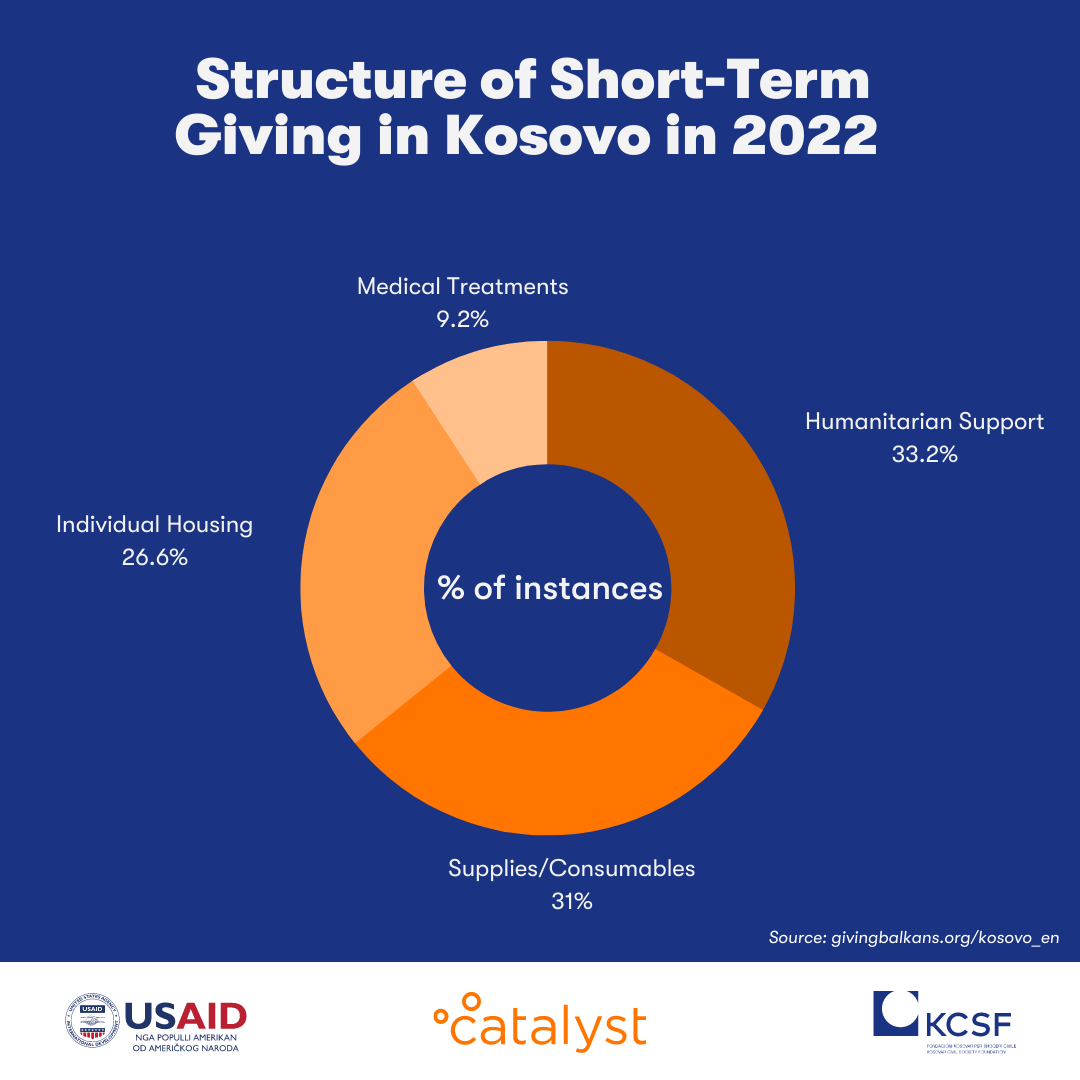
Structure of Short-Term Giving in Kosovo in 2022 (% of instances) - download the infographic in PDF
Breakdown of Long-Term Effect Giving in 2022
Strategic giving, or giving with the intention of long-term effect, can be broken down into a variety of uses of donations, including the purchase of equipment, provision of stipends or scholarships, provision of services, and capital investments.
Long-term effect giving comprised 15.5% of donation instances and 29.3% of the donated amount in 2022. The most frequent use of donation was equipment (46.2% of instances) followed by scholarships (37.8%).
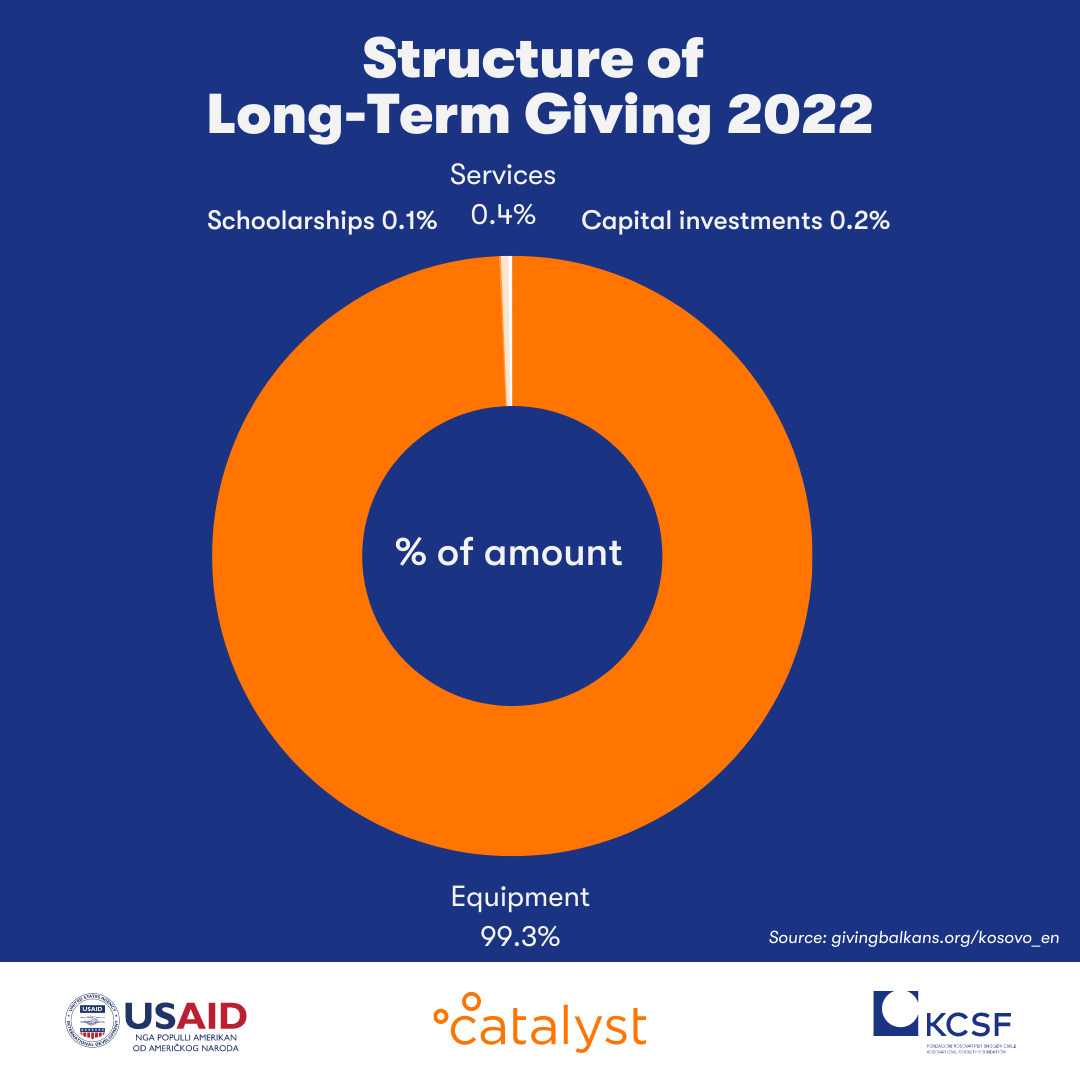
Structure of Long-Term Giving in Kosovo in 2022 (% of the amount) - download the infographic
Yet when viewing it from the donated amount, 97.5% of the funds donated were recorded with the intent for long-term effect done in the form of equipment. Examples of equipment donations made in 2022 include educational equipment (laptops, computers, monitors), medical equipment (hospital beds, ambulance vehicles, diagnostic machines), and adaptive equipment for people with disabilities.
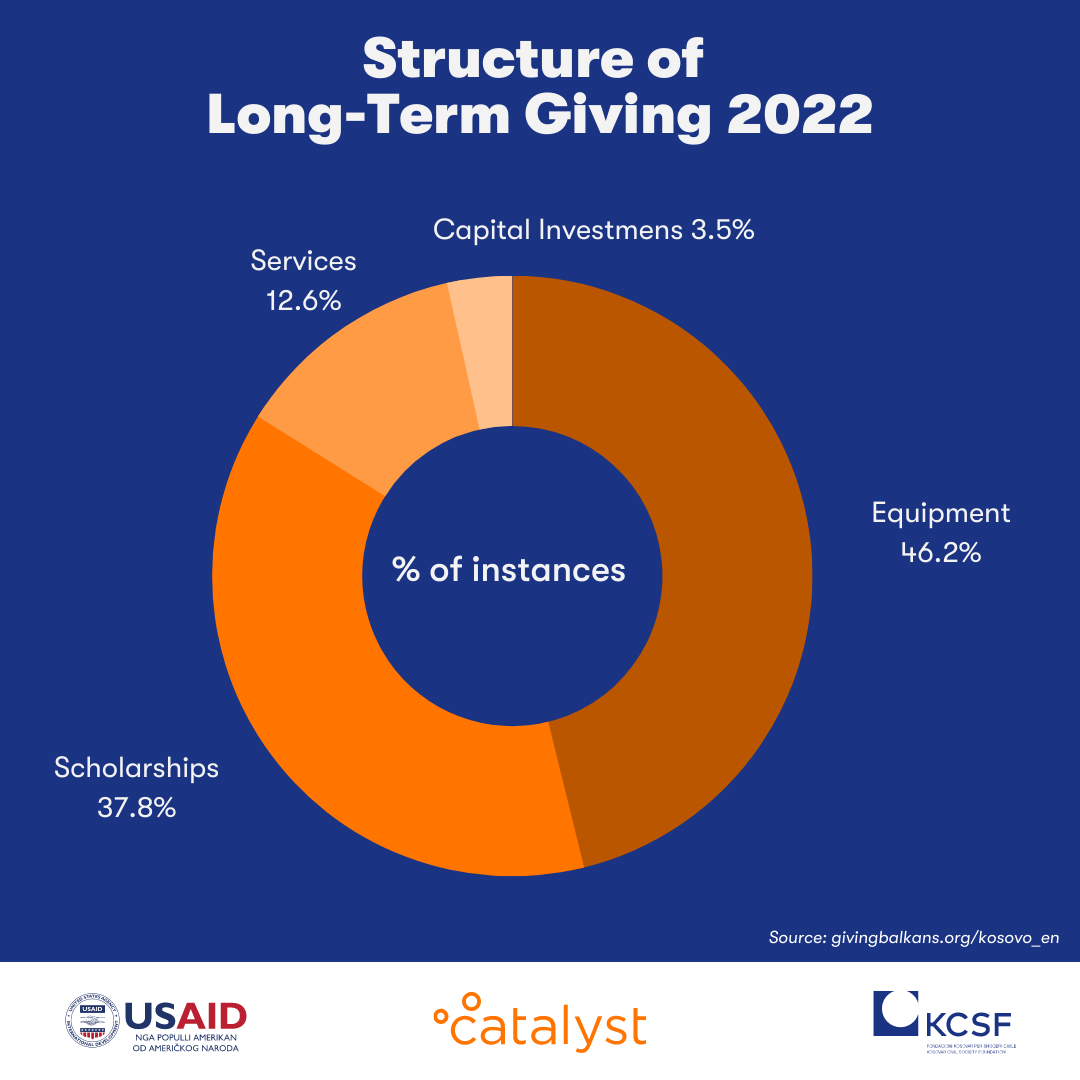
Structure of Long-Term Giving in Kosovo in 2022 (% of instances) - download the infographic in PDF
Intended Effects of Giving by Recipient Types
More than 43% of all strategic giving in 2022 was directed to individuals and families as recipients, with the primary use of donations being scholarships.
Nearly 59% of short-term effect giving was programmed through non-profits in 2022, with the primary use of donations being medical treatments and the provision of supplies and consumables.
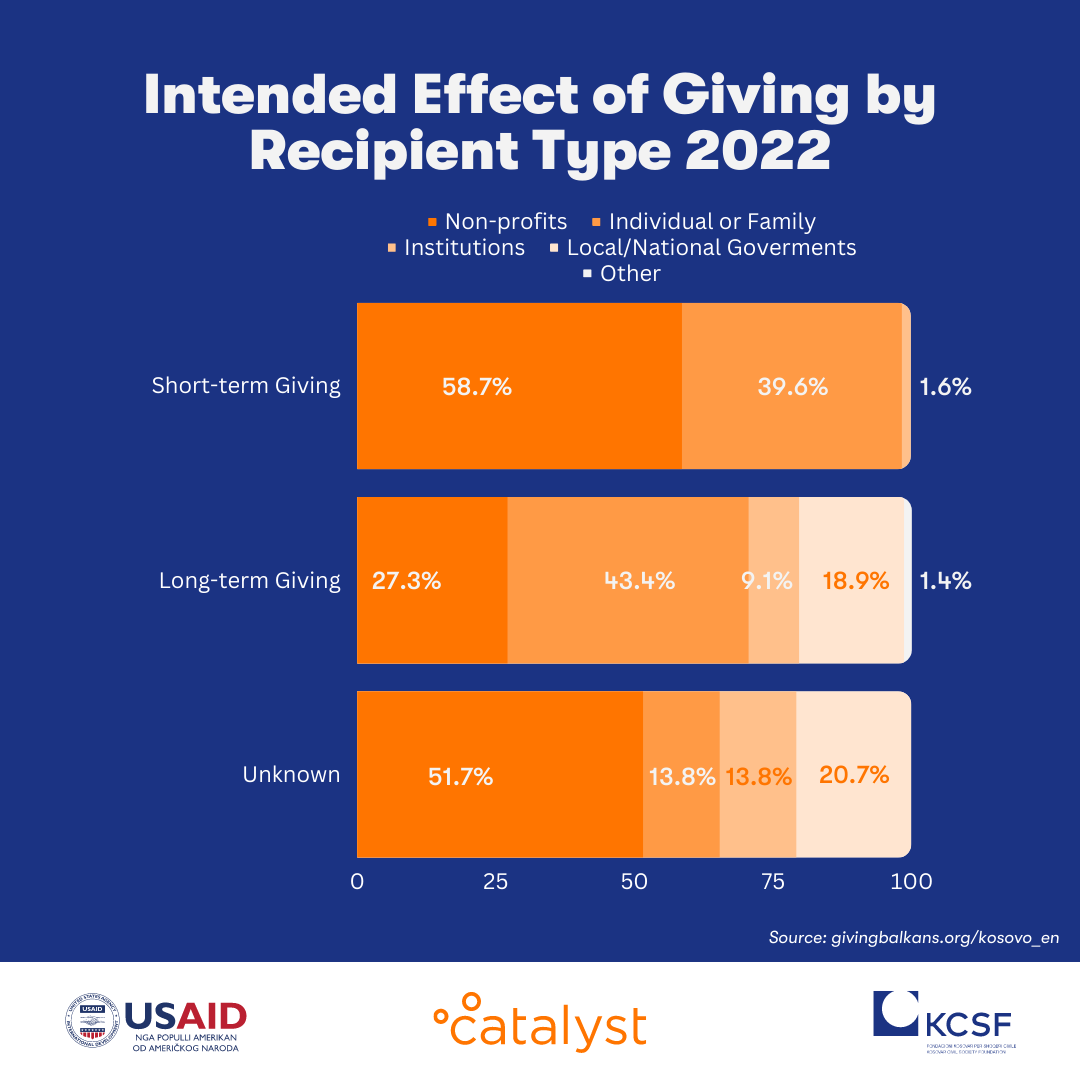
Intended Effects of Giving by Recipient Type in 2022 - download the infographic in PDF
Use of Donation by Recipient Types
100% of scholarships and 65.3% of humanitarian support were given directly to individuals and families.
88.9% of services, 72.4% of supplies and consumables, 71.0% of medical treatments, and 68.3% of donations for individual housing were given to a non-profit to program and reach final beneficiaries rather than giving directly to final beneficiaries.
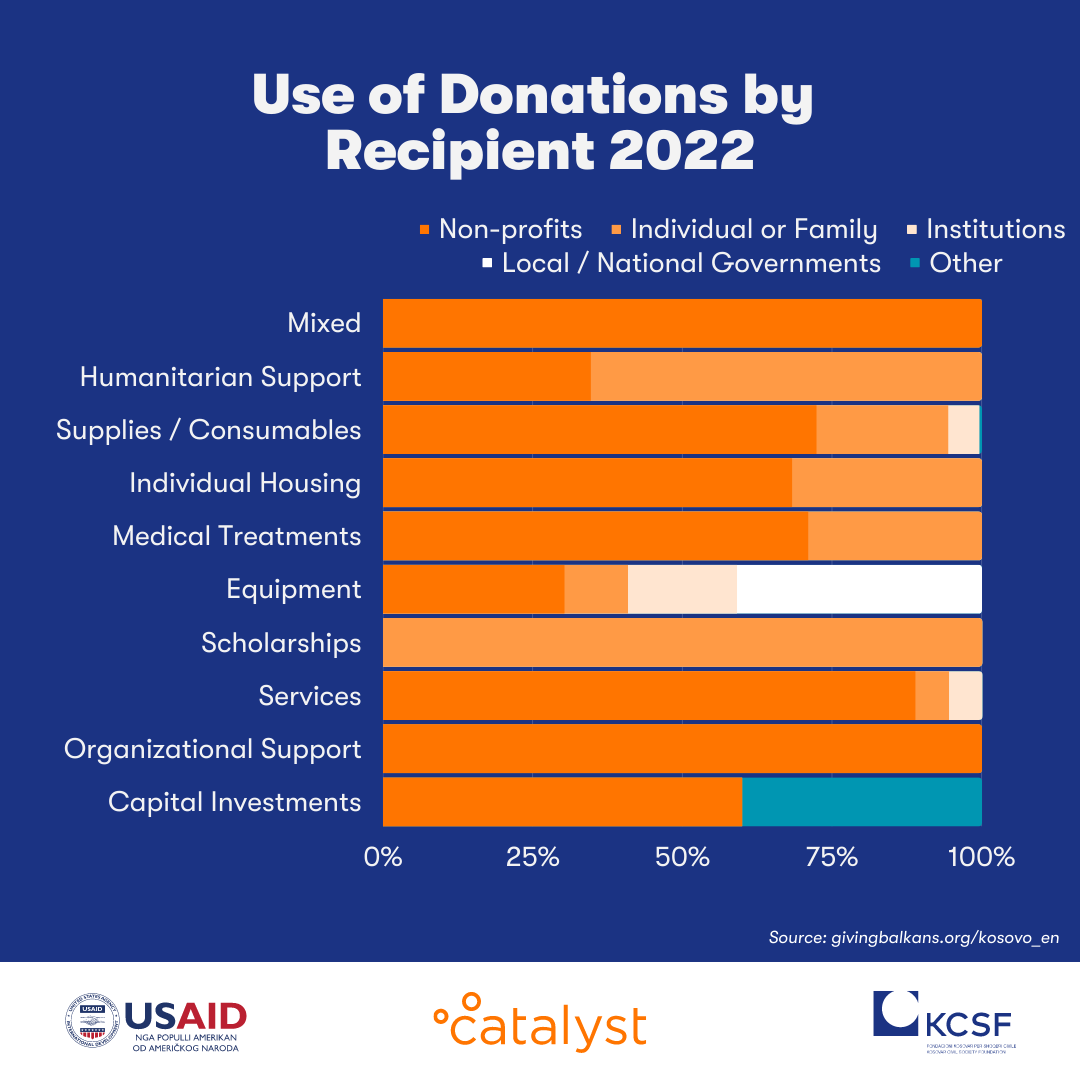
Use of Donations by Recipient in 2022 - download the infographic in PDF
Examples of Giving
Donation of 122 beds and assistive equipment
With the support from various donors, the Jetimët e Ballkanit Association distributed 122 beds and assistive equipment that included wheelchairs, crutches, walkers, and physiotherapy equipment to the municipality of Kaçanik, and to the associations Heroinat and Handikos Suhareke.
Humanitarian kitcthten
Januz Mustafa, a taxi driver from Ferizaj, opened a humanitarian kitchen on the occasion of Ramadan. Funds needed to provide meals – around EUR 120 for each meal – were raised by Januz with the help of family and friends. Thanks to the work of the humanitarian kitchen, during the month of Ramadan, meals were provided daily to around sixty socially disadvantaged families from Ferizaj.
More on the state of philanthropy in Kosovo in 2022:
- Giving Kosovo 2022: Report on the State of Philanthropy
- Infographic: What are the Effects of Giving?
- Kosovo's Giving Trends in 2022: A Spotlight on Poverty Relief and Healthcare Donations
- Kosovo Philanthropy: Beneficiary Groups and Support Channels in 2022
- Kosovo's 2022 Donor Landscape: A Deep Dive into Individual, Corporate, and Diaspora Giving
- Shifts in Kosovo's Philanthropy: Recipient Trends and Giving Flows in 2022
This report is made possible by the generous support of the American people through the United States Agency for International Development (USAID). The contents are the responsibility of Catalyst Balkans and do not necessarily reflect the views of USAID or the United States Government.
The Citizen Engagement Activity in Kosovo is a five-year initiative implemented by Kosovar Civil Society Foundation (KCSF) in partnership with the United States Agency for International Development (USAID).
Cover photo: unsplash.com
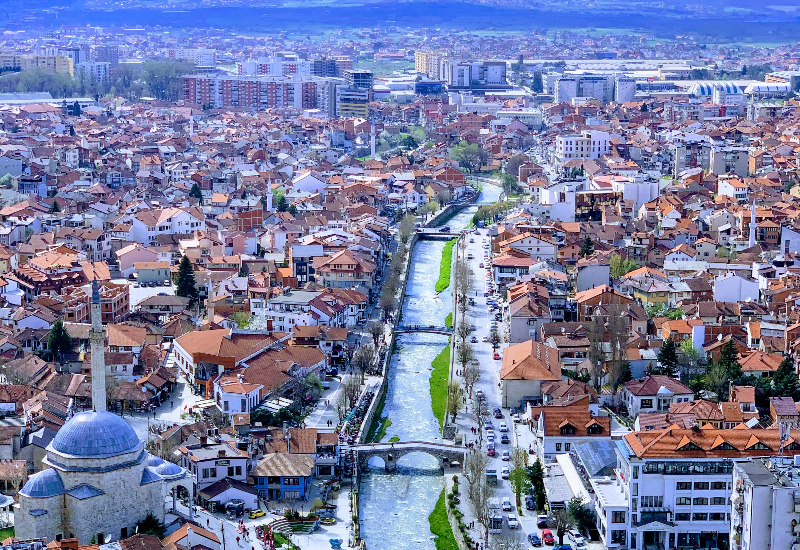

Leave a comment